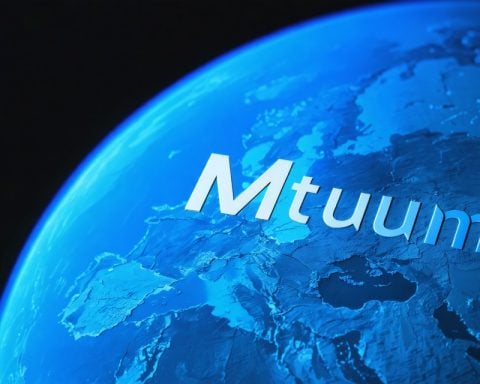The Promise of Enhanced Connectivity
Apple is set to transform how iPhone users communicate, especially in remote areas, by investing in groundbreaking satellite technology. With a massive investment of $1.5 billion in partnership with Globalstar, the tech titan aims to enhance direct-to-device (D2D) satellite communication, ensuring users stay connected even without cellular service.
This significant collaboration began in 2022 and has evolved into a deeper partnership. The financial commitment includes a $1.1 billion allocation to improve Globalstar’s infrastructure, along with $400 million for an equity stake, solidifying Apple’s role in this innovative market. Globalstar operates a fleet of 31 satellites, and the additional funding will enable the launch of up to 26 more, drastically improving coverage and reliability. A remarkable 85% of Globalstar’s network capacity will be dedicated to Apple’s services, reflecting the strategic alignment between the two companies.
This deal emphasizes the growing relevance of low-earth orbit (LEO) satellite technology in everyday communication. By allowing standard smartphones to connect directly with satellites, Apple is poised to redefine the communication landscape.
With this investment, Apple stays ahead in the D2D market, promising greater connectivity for iPhone users, particularly in isolated regions. As the partnership unfolds, the tech industry is eager to see how Apple’s advancements will reshape mobile communication, offering unprecedented reliability and freedom to users worldwide.
Apple’s Satellite Revolution: Bridging Communication Gaps in Remote Areas
Apple is set to revolutionize communication for iPhone users through a groundbreaking investment in satellite technology. With a staggering $1.5 billion commitment in partnership with Globalstar, Apple aims to elevate direct-to-device (D2D) satellite connectivity, ensuring users maintain communication access in areas lacking cellular service.
Key Features of Apple and Globalstar Partnership
– Massive Investment: Apple’s investment includes $1.1 billion for enhancing Globalstar’s existing infrastructure, alongside a $400 million equity investment, significantly increasing its stake in the satellite communications sector.
– Expanded Satellite Fleet: Globalstar currently operates 31 satellites, with the partnership facilitating the launch of up to 26 additional satellites. This expansion is poised to enhance the network’s coverage and reliability dramatically.
– Capacity Allocation: Notably, 85% of Globalstar’s network capacity will be reserved for Apple’s services, illustrating a strategic alignment that prioritizes iPhone connectivity.
Innovations in D2D Communication
The collaboration between Apple and Globalstar highlights the increasing importance of low-earth orbit (LEO) satellite technology in modern communication. The ability for standard smartphones to connect directly with satellites represents a significant leap forward, potentially transforming how users communicate during emergencies or in remote environments.
Advantages of Enhanced Connectivity
– Improved Access: Users in rural and isolated locations can expect better communication options, which could be crucial during emergencies.
– Reliable Connection: The direct satellite connection will provide reliable communication channels where cellular networks falter, ensuring continuous access to information and emergency services.
Pros and Cons
Pros:
– Unprecedented Connectivity: Expands communication capabilities in remote areas.
– High Reliability: Reduces dependency on traditional cellular networks.
Cons:
– Cost Implications: Potential increase in iPhone pricing to accommodate new technology.
– Infrastructure Challenges: The need for extensive infrastructure upgrades and satellite deployments could face delays.
Pricing and Market Trends
As of now, the cost implications of incorporating D2D satellite capabilities into iPhones remain speculative. However, the projected advancements are expected to position Apple favorably in the competitive landscape of mobile technology, creating a sustainable competitive advantage over rivals.
Use Cases
– Emergency Services: Essential for users needing to contact authorities in remote areas during natural disasters or accidents.
– Outdoor Activities: Ideal for hikers, campers, and adventurers who require reliable connectivity far from urban centers.
Future Predictions
As Apple continues to innovate in the satellite communication sector, industry experts predict an increase in partnerships and investments in LEO technology across the tech industry. This shift may lead to more companies exploring satellite connectivity, thereby transforming the entire communication landscape.
For more insights on technology advancements, visit Apple’s official site.









